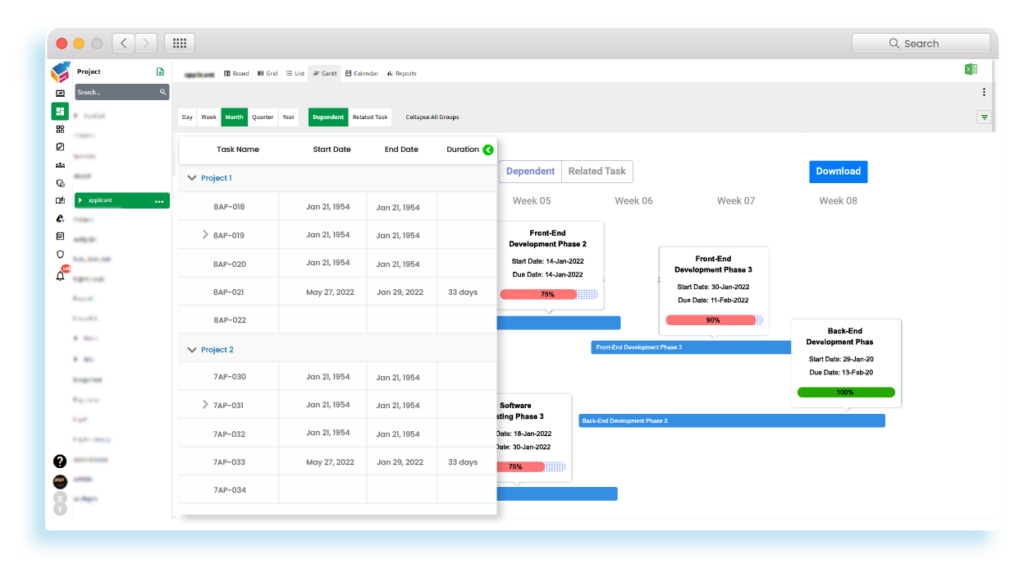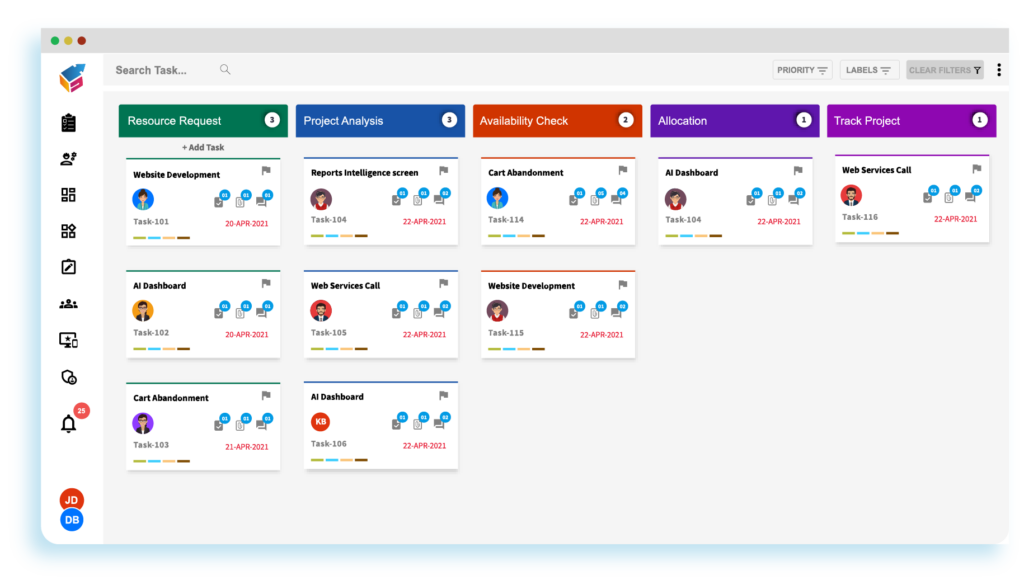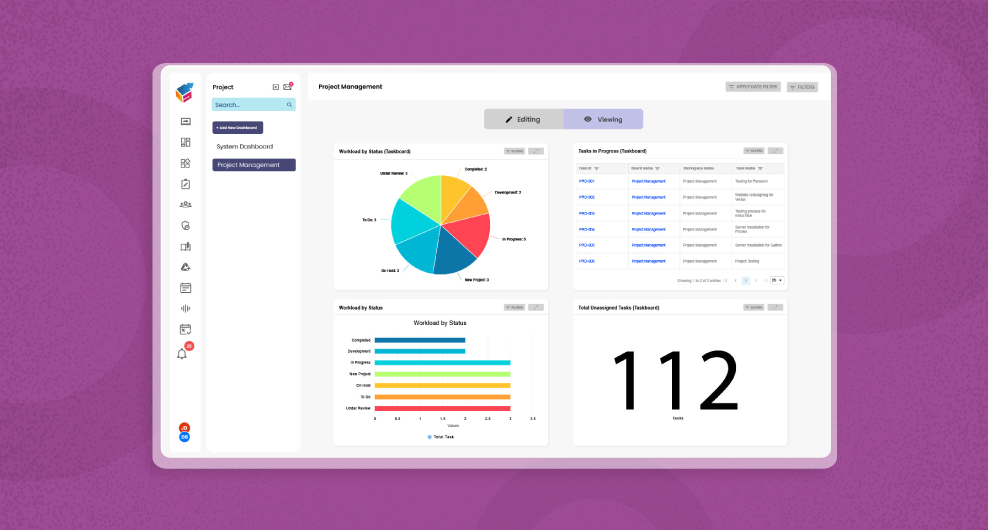Table of Contents
“Whether you’re a project manager or not, you’ve likely heard the saying, ‘you can’t manage what you don’t measure.’ However, even if you recognize the importance of tracking project data, it can still be challenging to determine which performance metrics for project managers are most crucial.
Relying solely on broad categories like ‘budget’ to assess a project’s status makes it difficult to pinpoint specific issues or successes. Without these detailed insights, you may find yourself guessing when it comes to identifying problems and solutions.
To gain a more objective understanding of what’s working and what isn’t in your projects, it’s essential to use finer-grained project management analytics. That’s why we’ve compiled a list of performance metrics for you to monitor. Let’s explore them.”
Getting started with project manager performance metrics
Getting started with project manager performance metrics is a critical step in ensuring that your projects are on track and your project managers are effectively leading their teams. Performance metrics help you assess how well your project managers are performing and identify areas for improvement. Here’s a step-by-step guide to get you started:
Define Clear Objectives:
- Start by clearly defining the objectives and goals of your project manager performance metrics. What are you trying to achieve by measuring their performance? Are you looking to improve project outcomes, team productivity, or leadership skills?
Identify Key Performance Indicators (KPIs):
- Determine the key metrics that align with your objectives. These metrics should be specific, measurable, achievable, relevant, and time-bound (SMART). Common project management KPIs include:
- Project Timeliness: Meeting project deadlines and milestones.

- Budget Management: Staying within budget or cost containment.
- Quality of Deliverables: Assessing the quality of project outcomes.
- Stakeholder Satisfaction: Gathering feedback from stakeholders.
- Team Productivity: Evaluating the team’s efficiency and performance.
- Risk Management: Identifying and mitigating project risks.
- Communication: Assessing the effectiveness of communication within the team and with stakeholders.
- Resource Allocation: Efficient use of resources, including human resources and materials.

What are KPIs in project management?
KPIs in project management are measurable metrics used to assess project success. They include on-time delivery, budget adherence, scope control, resource efficiency, risk management, quality of deliverables, stakeholder satisfaction, team productivity, issue resolution time, and customer feedback. Monitoring these indicators enables data-driven decisions and ensures project success.
Establish Clear Baselines:
- Determine the baseline or benchmark for each KPI. This provides a point of reference for measuring improvement or decline in performance.
Implement Data Collection and Tracking:
- Set up a system for collecting and tracking data related to the selected KPIs. This could involve using project management software, spreadsheets, or specialized tools.
Regular Monitoring and Reporting:
- Establish a regular cadence for monitoring and reporting on the selected KPIs. This could be done weekly, monthly, or at key project milestones. Ensure that project managers understand the importance of accurate and timely reporting.
Performance Analysis:
- Analyze the collected data to evaluate the performance of each project manager. Compare actual performance against the established baselines and identify trends or areas of concern.
Feedback and Coaching:
- Provide feedback to project managers based on the performance metrics. Recognize and reward good performance and address areas that need improvement. Offer coaching or training as necessary.
Continuous Improvement:
- Use the insights gained from performance metrics to continuously improve project manager performance. Adjust objectives and KPIs as needed to better align with organizational goals.
Accountability and Transparency:
- Ensure accountability by making performance metrics transparent to project managers and relevant stakeholders. This promotes a culture of accountability and encourages improved performance.
Documentation and Documentation:
- Maintain thorough documentation of performance metrics, analysis, and actions taken. This documentation can be valuable for future reference and for making data-driven decisions.
Adapt and Evolve:
- Be open to adapting your performance metrics as your organization’s goals and projects evolve. What’s relevant today may not be so in the future.
Legal and Ethical Considerations:
- Ensure that your performance metrics adhere to legal and ethical standards. Avoid metrics that might lead to discrimination or unfair evaluation.
Remember that performance metrics are just one part of evaluating project manager performance. Qualitative assessments, such as leadership skills, decision-making abilities, and adaptability, should also be considered. Balancing quantitative and qualitative assessments provides a more comprehensive view of a project manager’s performance.
3 tips for selecting additional metrics to monitor
Selecting additional metrics to monitor can significantly enhance your ability to assess and improve project manager performance. When choosing these metrics, it’s essential to align them with your project’s specific goals and objectives. Here are three tips to help you select additional metrics effectively:
Align Metrics with Project Objectives:
- Ensure that the additional metrics you choose directly align with the objectives and goals of your projects. Consider the specific outcomes you want to achieve, whether it’s completing the project within a certain timeframe, staying within budget, or meeting quality standards. For example, if your project’s primary goal is to deliver a high-quality product, you might consider metrics related to defect rates, customer satisfaction, or product performance.
Consider Leading and Lagging Indicators:
- Balance your selection of metrics between leading and lagging indicators. Lagging indicators are retrospective and measure past performance, while leading indicators provide early insights into potential issues or successes. A mix of both types of metrics can help project managers proactively identify and address problems. For instance, a lagging indicator could be the percentage of completed tasks on time, while a leading indicator could be the number of identified risks or issues per week.
Consult with Stakeholders and Team Members:
- Involve project stakeholders and team members in the metric selection process. They can provide valuable insights into what aspects of project management are most critical for success. Stakeholders may have specific concerns related to the project’s impact on the organization, while team members can offer perspectives on team dynamics and collaboration. Conduct interviews or surveys to gather input and ensure that your chosen metrics reflect the needs and expectations of all relevant parties.
Ultimately, the selection of additional metrics should be a thoughtful and collaborative process that considers the unique context of your projects. Regularly review and refine your metrics to ensure they remain relevant and aligned with your project’s evolving goals and priorities.
Track project manager performance metrics in a single source of truth
Tracking project manager performance metrics in a single source of truth is essential for maintaining consistency, accuracy, and transparency in your performance tracking process. Here’s a step-by-step guide on how to do this effectively:
Select a Centralized Platform:
- Choose a centralized platform or software tool to serve as your single source of truth for tracking project manager performance metrics. This could be a project management software, business intelligence tool, or a custom-built dashboard. Ensure that it can accommodate your chosen metrics and offers data visualization capabilities.
Define Data Sources:
- Identify the data sources that will feed into your centralized platform. These sources may include project management software, financial systems, stakeholder feedback surveys, and other relevant data repositories. Establish connections or integrations with these sources to automate data collection as much as possible.
Standardize Metrics and Data Points:
- Standardize the metrics and data points you’ll track across all projects and project managers. Consistency is key for meaningful performance comparisons. Develop a clear and well-documented framework that outlines what each metric represents and how it’s calculated.
Set Access Controls:
- Implement access controls and permissions to ensure that only authorized individuals can view and modify the data in your single source of truth. Different stakeholders, including project managers, executives, and team members, may have varying levels of access.
Data Validation and Quality Assurance:
- Establish data validation processes to ensure data accuracy and quality. This may involve regular data validation checks, data cleaning, and data reconciliation to address any discrepancies or errors.
Automate Data Updates:
- Automate the process of updating data in your centralized platform. Whenever new project data becomes available, whether it’s related to project progress, budget tracking, or stakeholder feedback, ensure it flows seamlessly into the system.
Visualization and Reporting:
- Create interactive dashboards and reports that provide real-time visibility into project manager performance metrics. Use data visualization techniques like charts, graphs, and scorecards to make the information easily digestible for stakeholders.
Regular Monitoring and Analysis:
- Continuously monitor and analyze the data within your single source of truth. Regularly review project manager performance against established KPIs and benchmarks. Use this information to identify trends, areas for improvement, and opportunities for recognition.
Feedback and Actionable Insights:
- Use the data to provide feedback to project managers and initiate actionable insights. Celebrate successes and address areas that need improvement. Encourage project managers to use the data for self-assessment and improvement planning.
Iterate and Improve:
- Periodically assess the effectiveness of your centralized tracking system. Gather feedback from users to identify any usability issues or additional metrics that should be included. Continuously iterate and improve the system to better serve your organization’s needs.
Training and Onboarding:
- Ensure that all relevant stakeholders, including project managers and team members, receive training and onboarding on how to use the centralized platform effectively. This promotes adoption and maximizes the benefits of the single source of truth.
Data Security and Privacy:
- Implement robust data security and privacy measures to protect sensitive information. Ensure compliance with relevant data protection regulations and best practices.
By establishing a single source of truth for tracking project manager performance metrics, you can streamline data management, improve decision-making, and foster a culture of transparency and accountability within your organization.

Experience a 7-day free trial and gain instant access to essential metrics like availability, utilization, and scheduled time—all conveniently consolidated within the Yoroflow platform.




